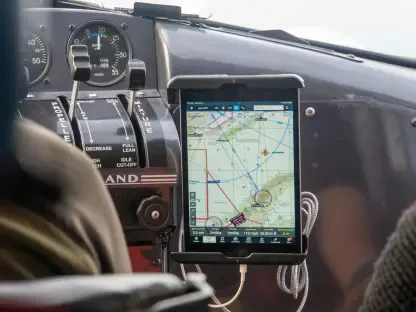Meet Simon Glairy, a renowned expert in insurance and Insurtech, with a deep focus on risk management and AI-driven risk assessment. With years of experience navigating the evolving landscape of insurance technology, Simon offers invaluable insights into the latest industry trends and innovations. Today, we dive into the exciting expansion of a leading healthcare technology provider into the property and casualty (P&C) insurance market through a groundbreaking partnership. Our conversation explores the motivations behind this move, the challenges of modernizing payment systems, and the transformative potential of digital solutions in streamlining claims processes.
How did the decision to expand into the property and casualty insurance market come about, and what drove this strategic shift?
The move into the P&C market was a natural progression for a company with deep roots in healthcare technology and payments. The inspiration came from recognizing that many of the payment complexities and inefficiencies in healthcare insurance—such as fragmented systems and manual processes—also exist in the P&C space. There was a clear opportunity to apply proven expertise in solving these issues to a new sector. This expansion aligns with a broader mission to simplify payment processes across industries, ensuring that businesses, providers, and policyholders experience faster, more efficient transactions.
What makes a partnership with a global insurance solutions provider so critical to this expansion?
Partnering with a trusted name in insurance technology is a game-changer because it provides immediate access to an established platform and a wide network of P&C insurers. This collaboration came about through a shared vision of modernizing claims and payment processes. The partner brings a robust, scalable infrastructure and deep industry knowledge, which perfectly complements the payment expertise on the other side. Together, they can offer solutions that are tailored to the unique needs of the P&C market without requiring insurers to completely rebuild their existing systems.
Can you walk us through what the Advanced Payment Platform is and why it’s significant for P&C insurers?
The Advanced Payment Platform, or ZAPP, is essentially a digital connective layer designed to orchestrate payments in a scalable, efficient way. It addresses core pain points for P&C insurers, like slow, paper-based workflows and the complexity of coordinating multi-party payments. By integrating digital-first solutions, ZAPP streamlines the entire payment process—from claims disbursements to premium refunds—making it faster and more transparent for businesses, providers, and policyholders. It’s about improving the end-to-end experience while reducing operational friction.
What are some of the biggest challenges P&C insurers face with legacy systems, and how do these impact their operations?
Legacy systems in the P&C industry often rely on outdated technology and paper-based processes, which create significant hurdles. These systems are slow, error-prone, and struggle to handle the intricacies of multi-party payments, layered approvals, and regulatory requirements. The result is delayed claims processing, frustrated policyholders, and higher operational costs. Additionally, fragmented delivery systems make it hard to achieve transparency or efficiency. Modernizing these workflows is critical to staying competitive and meeting customer expectations in today’s digital age.
How does integrating with a payments marketplace and orchestration platform benefit P&C insurers in practical terms?
Integration with a payments marketplace and orchestration platform offers prebuilt connections to a wide range of payment technologies and providers, which is a huge advantage. It means insurers can quickly adopt new payment methods and gain greater control over their processes without needing extensive custom development. This setup simplifies both inbound and outbound payments, regardless of the existing IT infrastructure. Practically, it translates to faster implementation, less downtime, and an ability to adapt to changing needs with minimal disruption.
There’s talk of slashing payment integration timelines dramatically. Can you explain how this is achieved and why it matters?
The drastic reduction in integration time—from what used to take 9 to 18 months down to just 1 to 2 weeks—is largely due to prebuilt integrations and a streamlined orchestration system. Instead of building connections from scratch, insurers can plug into an existing ecosystem of payment solutions. This speed is a game-changer because it allows insurers to roll out new capabilities much faster, reducing operational delays and improving cash flow. It also means they can respond to market demands or customer needs without getting bogged down by lengthy IT projects.
What kinds of payment complexities are common in the P&C industry, and how are they being addressed?
In the P&C industry, payment complexities often stem from the need to coordinate between multiple parties—think insurers, policyholders, vendors, and service providers. Add to that the layers of approvals, regulatory compliance, and varying payment methods, and you’ve got a recipe for inefficiency. Solutions like ZAPP tackle these issues by digitizing and automating workflows, ensuring payments are processed quickly and accurately. By simplifying these interactions, insurers can reduce errors, cut costs, and deliver a better experience for everyone involved.
What is your forecast for the future of digital claims management in the P&C market?
I believe the future of digital claims management in the P&C market is incredibly promising. We’re moving toward a landscape where automation, AI, and integrated payment platforms will become the norm, not the exception. This shift will drastically reduce manual workloads and errors, while improving transparency and speed. Insurers who embrace these technologies early will gain a competitive edge, as policyholders increasingly demand seamless, digital-first experiences. Over the next few years, I expect to see even tighter integrations between payment systems and core insurance platforms, driving efficiency to new heights.









